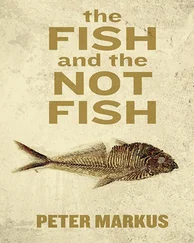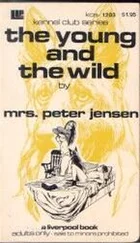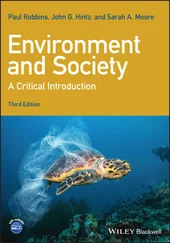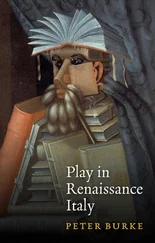37. Cf. Cassirer, La filosofía de la Ilustración, y Blom Philipp, Encyclopédie. El triunfo de la razón en tiempos irracionales, Barcelona, Anagrama, 2007.
38. “Culture or civilization, taken in its wide ethnographic sense, is that complex whole which includes Knowledge, belief, art, morals, law, custom, and any other capabilities and habits acquired by man as a member of society” (published in 1871, in the book by Tylor Primitive Culture). It’s worth mentioning the following works by Klemm: Allgemeine Kulturgeschichte der Menschheit (10 volumes, 1843-52, “General Cultural History of Mankind”); Allgemeine Kulturwissenschaft (2 volumes., 1854-55, “General Cultural Science”. Vol. 1: “Introduction…”; vol. 2: “Material Foundations of Human Culture”); his “Manual of Old German Manners” (Handbuch der Germanischen Alterthumskunde, 1836), and his “History of Collections for Science and Art in Germany” (Geschichte der Sammlungen für Wissenschaft und Kunst in Deutschland, 1837). A lot has been written about the definition of “culture”, without ever reaching an agreement; it is sufficient to mention some outstanding names that have addressed the issue: the ones I just mentioned in previous paragraphs, Franz Boas, Wilhelm Wundt, Norbert Elias, Lucien Fevbre, Fernand Braudel, T. S. Eliot, Alfred Kroeber y Clyde Kluckhohn, Ernst Gombrich, Clifford Geertz; Peter Burke, of course, and many others, among whom we find a good part of the anthropological production.
39. And against an attempt to use Freudian theories in anthropological analysis. See Boas Franz, “The Methods of Ethnology”, in American Anthropologist, Vol. 22, No. 4, October-December, 1920, pp. 311-322. Since the 1880s, Franz Boas reflected on the differences between cultures and on the distinctions that needed to be established against generalizing and universalists stances. He and his students introduced relativism in cultural analysis, creating an escape route that opposed the division established between civilised and primitive societies.
40. “Quien tal hace, que tal pague”. Justicia, magia y sociedad… especially Chapter 4.
41. Bourdieu Pierre, Raisons pratiques. Sur la théorie de l’action, Paris, Éditions du Seuil, 1994.
42. Bourdieu Pierre, “Le pouvoir symbolique”, in Annales. E.S.C., Year 32, No. 3, May-June 1977, pp. 405-411, and Postface à Architecture gothique et pensée scolastique by E. Panofsky, Éditions de Minuit, Paris, 1967, pp.133-167.
43. Georg Simmel, “The Sociology of Conflict. I”, in American Journal of Sociology, Vol. 9, No. 4, January, 1904, pp. 490-525. For conflict in the intellectual world and domination, see by Pierre Bourdieu, Campo de poder, campo intelectual. Itinerario de un concepto [1966, 1969, 1971, 1980], Buenos Aires, Montressor, 2002; «Les intellectuels dans le champ de la lutte des classes», in La nouvelle critique, No. 87, October, 1975, pp. 66-69; «Les modes de domination», in Actes de la recherche en sciences sociales, Vol. 2, No. 2-3, 1976, pp. 122-132; “Le champ scientifique”, in Actes de la recherche en sciences sociales, Vol. 2, No. 2-3, 1976, pp. 88-104; Homo academicus, Paris, Éditions de Minuit, 1984; «Champ du pouvoir et division du travail de domination. Texte manuscrit inédit ayant servi de support de cours au Collège de France, 1985-1986», in Actes de la recherche en sciences sociales, No. 190, Décembre, 2011, pp. 126-139; «La domination masculine», Actes de la recherche en sciences sociales, No. 84, September, 1990, pp. 2-31.
44. Levi Giovanni, “Sobre Microhistoria”, in Burke Peter, Formas de hacer historia, 2nd. reprint., Madrid, Alianza, 1996, pp. 119-143; La herencia inmaterial. La historia de un exorcista piamontés del siglo XVII, Madrid, Nerea, 1990. De Ginzburg Carlo, I Benandanti. Stregoneria e culti agrari tra Cinquecento e Seicento, 3rd. ed., Torino, Einaudi, 1979; Historia nocturna. Un desciframiento del aquelarre, Barcelona, Muchnik, 1991; Miti, emblemi, spie. Morfologia e storia, 2nd. ed., Torino, Einaudi, 1992, y El hilo y las huellas. Lo verdadero, lo falso, lo ficticio, Buenos Aires, Fondo de Cultura Económica, 2010.
45. Eliot T. S., Notes Towards the Definition of Culture, New York, Harcourt, Brace, 1949.
46. Todorov Tzvetan, El espíritu de la Ilustración, Barcelona, Círculo de Lectores, 2014; on the Enlightenment, cf. also: Reichardt Rolf (ed.), Aufklärung und historische Semantik. Interdisziplinäre Beiträge zur westeuropäischen Kulturgeschichte, in Zeitschrift für historische Forschung, Vierteljahresschrift zur Erforschung des Spätmittelalter u. der frühen Neuzeit, Beiheft 21 (notebook 21), 1998 (text about historical semantics and cultural history of politics during the Enlightenment), and Bäehr Andreas, Grenze der Aufklärung. Körperkonstruktionen und die Tötung des Körpers im Übergang zur Moderne, s.l., Wehrhahn, 2005; Ceballos Gómez Diana L., Poderes locales y funcionarios ilustrados: conflictos y discursos en el Virreinato del Nuevo Reino de Granada, in the process of being published.
47. Horkheimer Max and Theodor Adorno, Dialektik der Aufklärung. Philosophische Fragmente, 16th. ed., Frankfurt am Main, Fischer, 2006. See also: Marcuse Herbert, El carácter afirmativo de la cultura [1965], Buenos Aires, El Cuenco de Plata, 2011; Adorno, Theodor, Kulturkritik und Gesellschaft II. Eingriffe. Stichworte, Frankfurt am Main, Suhrkamp, 1977; Debray Régis and Jean Bricmont, A la sombra de la Ilustración. Debate entre un filósofo y un científico, Barcelona, Paidós, 2004, y Konesmann Ralf (ed.), Kulturkritik. Reflexionen in der Veränderten Welt, Leipzig, Reklam, 2001.
48. I refer the reader to the already referenced books by Professor Burke, Popular Culture… and Küchenlatein…, as good examples of the loss of such cultural treasures. For current processes: Jameson Fredric y Slavoj Žižek, Estudios Culturales. Reflexiones sobre el multiculturalismo, Buenos Aires, Paidós, 1998. It’s worth mentioning that reflections denominated postcolonial, decolonial or post occidental have had a long tradition in Latin America and the Caribbean, going back to the first decades of the 20th century, even if the text Orientalism by Palestinian Edward Said [1978] is commonly regarded as the first one; this is, partly, because the other books are neither written in English nor belong to the circuits of knowledge recognized at the academic forefront. It is sufficient to mention some examples: José Carlos Mariátegui, Siete ensayos de interpretación de la realidad peruana (1928); Gilberto Freyre, Casa-grande & Senzala (1933); Aimé Césaire, Cahier d’un retour au payz natal (1939) and Discours sur le colonialisme (1955); Fernando Ortiz, Contrapunteo cubano del tabaco y el azúcar (1940); Alfonso Reyes, Última Tule (1942); Frantz Fanon, Peau noire, masques blancs (1952); O’Gorman Edmundo, La invención de América (1958).
49. The postulates of the Enlightenment (reason and rationality, individualism, scientific method, an the ideal of progress) were established as a rule and have been the basis of later knowledge production. Only a few exceptions deviated from this course and went against the general trend; those were studied by Isaiah Berlin in the book of the same name, as well as in the posthumously edited version, with the essays dedicated to the counter-enlightened Johann Georg Hamann (1730-1788), many of which didn’t prosper and were “aborted” by the dominant intellectual model. Vid. Berlin Isaiah, Contra la corriente. Ensayos sobre historias de las ideas, México, Fondo de Cultura Económica, 1992, and El mago del norte. J.G. Hamann y el origen del irracionalismo moderno, Madrid, Tecnos, 1997.
50. Levi Giovanni, “Sobre Microhistoria”, in Peter Burke (Comp.), Formas de hacer historia, Madrid, Alianza, 1993, pp. 119-143.
51. For the Azande, all that happens is explained by means of witchcraft, which can also be caused involuntarily and at long distance, like evil eye in southern Europe or in America. Evans-Pritchard, Hexerei, Orakel und Magie bei den Zande, 1st. ed., Frankfurt am Main, Suhrkamp, 1978; see also: Dodds, E. R., The Greeks and the Irrational, Berkeley-Los Angeles, University of California, 1951, especially Chapter V: “The Greek Shamans and the Origin of Puritanism”, pp.135-178; Lloyd Geoffrey, Magic, Reason and Experience. Studies in the Origin and Development of Greek Science, Cambridge, Cambridge University Press, 1979; Thomas Keith, Religion and the Decline of Magic. Studies in Popular Beliefs in Sixteenth- and Seventeenth- Century England, 2a. ed., 1a. reimp. (1a. ed. 1971), Londres, Penguin Books (Peregrine), 1978; Clark Stuart, Thinking with Demons. The Idea of Witchcraft in Early Modern Europe, Oxford, Oxford University Press, 1997; Ceballos Gómez, “Magie”, in Dictionnaire…, and “Quien tal hace, que tal pague”…; Duerr Hans-Peter (ed.), Der Wissenschaftler und das Irrationale, Vol. I, Frankfurt am Main, Syndikat, 1981; as well as Wittgenstein Ludwig, Observaciones a LA RAMA DORADA de Frazer, 3rd. ed., Madrid, Tecnos, 2008. For magical practices in contemporary Europe see: Hauschild Thomas, Der böse Blick: ideengeschichtliche und sozialpsychologische Untersuchungen, 2nd. ed. revised, Berlin, Mensch und Leben, 1982 [1st. ed. 1979]; Favret-Saada Jeanne, Les mots, la mort, les sorts, París, Gallimard, 1977; Favret-Saada Jeanne and Josée Contreras, Corps pour corps. Enquête sur la sorcellerie dans le Bocage, París, Gallimard, 1981.
Читать дальше












